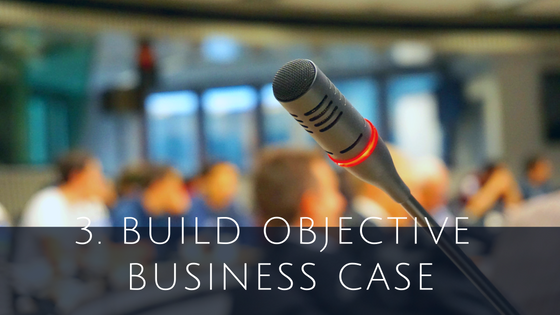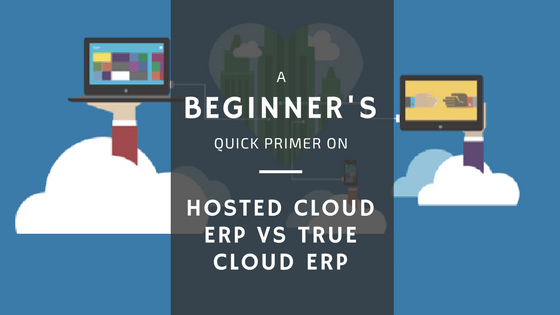Forget gut-feelings; when it comes to evaluating ERP systems for your company, you want to make sure you're making a fair, factual comparison of what's available out there.
One Cloud ERP advisor offered some useful (albeit lengthy) advice on how you can do so using the Cloud Adoption Index — a scoring approach designed to give organisations an objective perspective on Cloud's relevance to their business.
Now if you're new to Cloud ERP, I suggest heading to the post below first to get a short overview of the differences between Cloud and on-premise ERP systems:
SHOULD YOU GET A CLOUD OR ON-PREMISE ERP SYSTEM? CLICK HERE TO LEARN THE DIFFERENCES BETWEEN THE TWO
But if you've already leaning towards Cloud ERP software, here's a quantitative 4-step approach adapted from here to help you get started on the right step:

Framework for Cloud ERP assessment image from SAP blog
Step 1: Identify Your Company's Decision Dimensions for Cloud ERP

Your company has its own unique circumstances. These greatly influence the overall decision-making process for any new system or project.
So for a more objective assessment, try evaluating your potential ERP project through these 8 Key Decision Dimensions:
- 1. Your Organisation's Appetite for Change
How open is your company to genuine digital transformational change? - 2. Extent of Simplification and Standarisation Desired
How important is it that your company simplifies and standardises processes as a result of a new ERP software (as opposed to having full customisation flexibility)? - 3. Scalability and Time to Market
How important is it for your company to get your new ERP system up and running quickly? - 4. Openness to Vendor-led Governance
Is your company open to your ERP vendor managing your Cloud system (as opposed to hosting and managing the system internally)? - 5. Desire for Innovation vs. Maintaining Status Quo
How important is it for your company to pursue new innovative change (as opposed to keeping the status quo)? - 6. System Predictability and Global Performance Consistency
How important is it to have a predictable system and consistent performance for all your entities worldwide? - 7. Network and Information Security
How important is it to have robust network and information security across your entire organisation at all times? - 8. Cost structure and pricing model
Does the cost structure and pricing model play a significant role in your decision to move to a Cloud ERP system?
Step 2: Score, Review, and Prioritise Those Decision Dimensions for ERP

Next, you'll want to start scoring those 8 decision dimensions in light of your business.
Start by giving each dimension a score between 1 to 10, with 1 being 'totally unimportant or untrue' and 10 being 'absolutely important or true'.
- Scores of 60 and above: Your company's ready for Public Cloud ERP - what are you waiting for? Consider Microsoft Dynamics 365 Business Central or NetSuite if you're from a SME. If you're from a midsized enterprise, you can explore SAP S/4HANA Cloud instead
- Scores of 30 - 59: Your company could consider Public Cloud ERP, but further considerations and adjustments are needed
- Scores of 30 and below: Your company may be prefer hosting an on-Premise ERP system on a private Cloud instead. Consider SAP Business One or Sage 300 ERP, and host them internally using a platform like Microsoft Azure
By no means does this score tell you whether you definitely should or shouldn't go for Cloud ERP. Instead, it's meant to give you a quick idea of where your company's priorities currently lie.
More importantly, each dimension score is designed to provide a clearer picture of your organisation's true drivers of change.
By understanding what's driving change within your company, you'll be in a better position to decide which factors are must-haves in your ERP project, and which are simply nice-to-haves.
Note: Some dimensions may oppose each other. Let's say having the lowest cost deployment model is highly important for your organisation i.e. Dimension 8 (Cost Structure and Pricing Model). At the same time, your organisation desires high control and governance over infrastructure i.e. Dimension 4 (Openness to Vendor-led Governance). In this case, it's nearly impossible to have high scores for both dimensions; they tend to be negatively correlated because internal governance is often more expensive than vendor-led governance.
Step 3: Build Objective Business Cases to Evaluate Cloud ERP vs. On-Premise ERP Systems

Now that you've identified your company's key decisions dimensions and prioritised them accordingly, your next step is to objectively assess which ERP software investment works better for your needs.
We found the following set of Cloud ERP Business Case Pillars from SAP quite useful for this purpose. The Pillars range from benefits that are easily quantifiable to those that are less quantifiable.

Image taken from SAP's blog found here
As you can see in the above figure, there are four Business Case Pillars:
- 1. Cost Reduction
- 2. Productivity Improvement
- 3. Revenue Enablement
- 4. Strategy Enablement/Loss Avoidance
Using each pillar as a reference, start identifying and quantifying the potential benefits you'll get from getting a new ERP system. Build two business cases separately — one for Cloud ERP software, and another for on-premise ERP software, for a fairer evaluation.
You could also use this approach for assessing whether a Cloud ERP solution that's in the Public Cloud or Private Cloud is more suitable for your organisation.
Here's an example. Suppose you're comparing a Cloud ERP software and an on-premise ERP software. With the Cost Reduction Pillar as a guide, you work out that a Cloud ERP implementation could give you 30% cost savings over the next 3 years, after taking services and subscription costs into consideration.
At the same time, you run through the Productivity Improvement Pillar and conclude you could gain 20%+ time savings by improving your supply chain processes, if you were to choose a Cloud ERP system over an on-premise ERP system.
That's already two compelling factors in your Cloud ERP software business case.
Step 4: Validate Your Case for Cloud ERP

Finally, you'll need to validate your decision based on the new ERP system's potential economic advantages.
Ideally, your projected returns on investments (ROI) should be measured based on projected cash flow quantity and timing. This should also include intangible positive or negative side effects.
One way is to plot your capital expenditure and operational expenditure over a 3 to 5 year time-frame. By doing so, you get better visibility into when the break-even point takes place, and how long it takes to achieve each possible benefit.
Factors you can take into consideration include:
- Project Costs: Your cash outflows as a result of embarking on this ERP project
- Annual Cash Flow: Your projected annualised cash flow benefits as a result of process improvements
- TCO Savings – Your annualised TCO benefits relative to your annual reccuring ERP costs
- Cumulative Cash Flow – Your cumulative cash flow which includes positive expected TCO savings, negative projects costs, and positive expected process benefits
Having said that, not all ERP investments are driven by pure financial reasons; the expected qualitative benefits play a significant role in evaluation.
But by grounding your initial analysis in cashflow terms, this helps you validate your options and discover which provides the best possible projected net outcomes.
Making Sense of ERP Evaluation
Evaluating a new ERP system is not a simple process. To get budget approval and buy-in from all levels in your organisation, you'll need to demonstrate that your business case is based on actual economic advantages .
These include quantitative assessment in terms of cash flow, timing of cash flows, as well as the intangible positive and negative side effects of a new ERP implementation.
If you need more expert advice in this area, please get in touch with us here, and one of our consultants will get back to you shortly.



